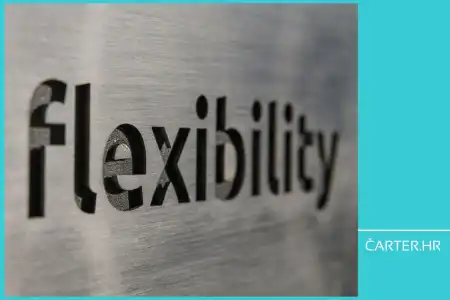
- 01.09.2025.
- News, Management, Education
Employees who know how to use digital tools are not only faster at their job - they’re better at communication, organization, and reduce the dependence on a single person. We bring concrete examples of what changes when the team knows how to use the systems that already exist. And why investing in employee training is not a cost.
Working in the yacht charter industry no longer relies solely on experience and good intentions - more and more, it relies on digital tools. From reception and base to skippers and technicians, every team member needs to know how to handle basic systems for communication, scheduling, entries, and updates. But is learning these tools just another cost, or…?
While some are adapting and growing, others are still wondering whether it pays off to invest in employee training. Is it just another expense, or can it be viewed as an investment that returns many times the initial cost?

Employee training is not just for office staff
When we talk about digital skills, most people think of marketing or administration. But the reality of yacht charter operations requires a much broader application.
Every person on the ground, at the base, or on board has a job that involves information, decision-making, and communication. Digital tools are not secondary here - they are a fundamental part of daily work.
Or at least they should be.
- A base manager who knows how to use a digital schedule can assign staff and boats without unnecessary calls or notes scribbled on scraps of paper. They make decisions faster and have a clearer overview of the situation.
- A receptionist who uses a basic CRM doesn’t just enter names into a table - they build an accurate profile of each guest - they know who is arriving early, who has special requests, who has been there before, and what their past experiences were.
- A skipper or hostess with access to the internal system can see what was agreed with the guests, update the boat status, and inform the base if something is missing.
- A technician whose app shows which boat needs inspection knows where to go and what to look for, and enters notes and photos available to everyone.
When everyone on the team has basic digital knowledge, there’s no dependency on one person “who knows everything” and there are fewer misunderstandings. This is not theory. This is practice.

Which specific digital tools should employees know how to use
You don’t need to know ten systems to work efficiently - but you do need to know how to use the ones the yacht charter company already has.
- Yacht booking systems - daily updates of prices, availability, and visuals - this is the guest’s first contact with your fleet. If it's inaccurate, the inquiry is lost. If it’s precise, it saves time for both sides.
- CRM systems - store all data about the guest, inquiry, and communication. Instead of asking for the same information five times, everything is already recorded in one place. The reception, base, and skipper see the same thing, and the guest feels that someone is following their needs.
- Communication platforms - it's no longer enough to say “well, I sent a message.” A clear communication channel among team members means there’s no duplication of tasks or lost information.
- Review management - quick (and calm) responses to reviews show your professionalism. Systematic monitoring of comments can reveal patterns that point to what guests are missing and what needs improvement.
- Social media tools - you don’t need a professional designer for a photo from the marina or a last-minute offer update. It’s enough for the person doing it to know where to click, what to post, and when.
- Digital tools for scheduling and organization - the entire team can have a clear overview of what’s already done, what needs urgent attention, and who is responsible for what. Instead of relying on memory or scribbles, everyone has access to the same information.
Using digital systems doesn’t require an IT expert, just people who know where to find what and when to act. That knowledge is what makes the difference between a chaotic start to the week and an organized team that knows what it’s doing.
Cost or investment?
Employee training is often perceived as just another cost - something that “has to be done,” but doesn’t bring any concrete return. But with that mindset, you miss the bigger picture.
The cost of training is measurable: a few hours “off” work, the engagement of a trainer/educator, possible technical setup… But the benefits are visible almost immediately, as well as in the long term.
Training reduces mistakes at work, increases the speed of problem-solving, and improves internal communication. This directly saves time but also avoids costs that arise from misinformation, delays, or confusion in the systems.
Additionally, guests increasingly expect quick, clear, and digitally supported responses. If the staff doesn’t know how to use basic systems or communication tools, the entire business suffers, regardless of the quality of your boats and offer.
When we look at training as an investment, we measure its contribution to organization, productivity, and the reputation of the entire company.
By investing in employees, you can more quickly adjust internal processes, use digital systems more effectively, and build trust with guests more easily. And trust brings recommendations, good reviews, and - new bookings.
So, employee training is not something you can do without. It is also a work tool, without which it’s hard to have a successful season.

Employee training cost vs. benefits throughout the season
Let’s take an example: a yacht charter company invests in a one-day training for using a CRM system. At first glance, this training may seem like an unnecessary expense, but let’s look at what you actually get for that price.
When employees learn how to enter data correctly, boat descriptions become clearer, photos more suitable, and availability accurate. This automatically reduces the number of inquiries that do not result in a booking due to incorrect information. Guests know exactly what to expect, and mistakes caused by haste or carelessness don’t happen.
If the person in charge of communication knows how to provide precise information, and quickly, the chances of securing a booking significantly increase. A quick response often means that a morning inquiry can turn into a confirmed reservation by the afternoon.
A social media post that goes out at the right time, with a clear description and a good photo, reaches more people. Each such post can bring a new inquiry or encourage a recommendation.
When a service technician enters the status of a boat and inspection photos into an app, the entire team immediately knows the condition of the vessel, with no need for additional calls or explanations.
A well-coordinated “digital” team works more calmly, faster, and more precisely. There are fewer delays, fewer misunderstandings, and less improvisation.
Over the course of the season, the employee training that initially seemed expensive pays off through:
- fewer lost inquiries,
- faster responses and more bookings,
- more accurate information that saves time,
- better online visibility,
- more efficient internal communication.
Is investing in employee training worth it?
It is. And not just because of technology, but because of people. People who work in yacht charter are often seasonal, they change, and come from different backgrounds.
Giving them clear, simple tools to work with and teaching them how to use them means creating a team that knows what it’s doing, when it’s doing it, and why.
And that is the precondition for a smooth season. Instead of constantly solving small problems, the team can plan, communicate, and complete tasks on time.
If you’re not sure where to start, you don’t need to do everything at once.
Start with one system - e.g. a CRM or scheduling tool. Choose one person from the team to be in charge of that system. Go through the basic functions together, test them on real examples, and implement them in daily practice.
On our platform čarter.hr, you can find recommendations, educational articles, and contacts for experts who can help you through this process.
The goal isn’t to be technologically perfect, but to be organized and efficient.
The time to learn is now, and if you need support, contact us. We’re here to help you work easier, smarter, and with more satisfaction.
Examples of using digital tools in yacht charter - what changes when the team knows how to use digital systems
1. Better service through CRM
Reception employees who complete training in using the CRM system can start recording guests’ special requests and sending them in advance to skippers and hostesses. Guests may then have the impression of a personalized service, which can increase the number of positive reviews and improve team communication.
2. More efficient boat check-ins
A skipper who learns how to enter the status and photos of a vessel into a mobile app can reduce check-in time from half an hour to about ten minutes. The information would then be immediately visible in the base, with no need for follow-up calls and explanations.
3. Planning technical tasks without chaos
Technical teams using tools like Trello can more clearly track vessel statuses, assign tasks, and communicate with the base. This can simplify the planning of weekly activities and reduce the number of errors.
4. Faster communication between base and crew
If a communication app is introduced, the base and skippers could stop wasting time on endless calls. Instead, information would arrive via topic-based groups, and all team members could see the same content at the same time.
5. Fewer mistakes when boats depart
A service technician using a digital checklist can reduce the risk of omissions. The app guides them step by step, and notes and photos remain available to everyone. This way, recurring problems could be tracked and solved systematically.
6. More direct inquiries thanks to posts
An employee who learns to use social media posting tools can regularly share content from the base. This could make the company profile more active and potentially fill the inbox with new inquiries.
7. Clearer schedule and more focus
By using a digital schedule, the base can have an overview of where each boat is and who is working on it. Such clarity can reduce improvisation and stress and bring a calmer working environment.
8. Easier onboarding of new seasonal workers
If the company prepares a digital board with tasks and procedures, new workers can understand their job faster. This means fewer questions and quicker integration into the team.
9. Fewer delays and emergency calls
A task management app can help technicians distinguish what’s urgent from what can wait. This could reduce chaos and the accumulation of last-minute jobs at the end of the week.
10. Better preparation for the next season
If all data - reviews, complaints, technical work, and guest lists - are digitally stored, management can start the new season more prepared. This would help avoid wasting time searching through papers and old emails.
Categories of trends
- News
- Sale
- Marketing
- SEO
- Web design
- Social media
- Technology
- Regulations
- Management
- Education
- Finances
- User experience
Newsletter
Sign up for the newsletter and receive the latest trends and tips straight to your inbox






